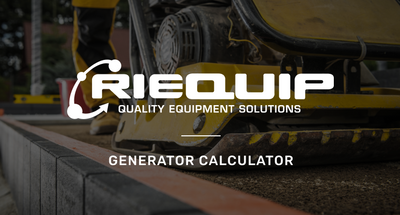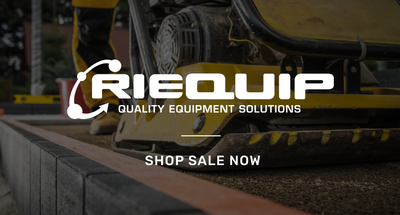Electric vs. Petrol Water Blasters: Which is Better?
In this article, we'll delve into the differences between electric and petrol water blasters, weighing up their respective pros and cons to provide readers with a comprehensive understanding of both types.
Through our findings we hope to assist you with making the right decision for your needs and choosing the right addition to your cleaning arsenal.
Electric Water Blasters
Electric water blasters offer a range of advantages that cater to the needs of various users, from homeowners to small business owners. Here's a closer look at the pros and cons of electric water blasters:
Pros
1. Ease of Use
Electric water blasters are lighter and more compact than petrol models, offering easy manoeuvrability and transport. Ideal for those valuing convenience and simplicity.
2. Reduced Noise Level
Unlike petrol models, which produce engine noise during operation, electric water blasters run quietly, making them suitable for use in residential areas without disturbing neighbours.
3. Better for the Environment
Electric water blasters emit zero emissions, providing a cleaner and greener option for eco-conscious users amidst rising concerns about air pollution and carbon emissions.
4. Suitable for Indoor Usage
Electric water blasters, with their quiet operation and zero emissions, are suitable for indoor use. They deliver effective cleaning power without compromising indoor air quality.
5. Low Maintenance Requirements
While regular maintenance should be undertaken for all your equipment, electric water blasters typically have fewer moving parts than petrol models, resulting in lower maintenance requirements.
Cons
1. Lower Pressure and Flow Rates
While sufficient for light to medium-duty cleaning tasks, electric models may struggle to tackle tough stains or remove ingrained dirt from surfaces effectively.
2. Dependency on Electric Power
Electric water blasters depend on electrical outlets for power, potentially limiting mobility and range during use. Users may need to use extension cords, which can restrict movement, especially for outdoor cleaning.
3. Performance Limitations
Electric water blasters may not match petrol models for heavy-duty tasks, limiting effectiveness on large areas or stubborn stains requiring higher pressure for removal.
Petrol Water Blasters
Petrol water blasters boast robust construction, high power, and versatility, making them a popular choice for demanding cleaning tasks, such as industrial level cleaning or heavy duty cleaning.
Pros
1. High Power and Performance
Petrol water blasters are unmatched in terms of pressure and flow rates, making them ideal for tackling tough stains, removing ingrained dirt, and cleaning large surface areas.
2. Versatility and Mobility
As long as petrol is supplied these models can be operated anywhere. This means high duty water blasting in remote locations, outdoor settings, and off-grid environments.
3. Durability and Longevity
Petrol models offer superior durability and longevity compared to electric counterparts, making them a reliable investment for long-term use.
4. Independence from Electrical Grid
Users can operate petrol models in areas without access to electricity, such as construction sites, farms, and remote properties, ensuring uninterrupted cleaning performance even in off-grid locations.
5. High Pressure for Tough Cleaning
Petrol water blasters are unmatched in terms of pressure and flow rates, making them ideal for tackling tough stains, removing ingrained dirt, and cleaning large surface areas effectively.
Cons
1. Loud Operation
The noise generated during operation of a petrol powered water blaster may be disruptive, particularly in residential areas, requiring users to take noise-reduction measures and use ear protection.
2. Less Portability
Petrol water blasters are heavier and bulkier than electric models, posing challenges in transportation and manoeuvrability, especially for users with limited strength or mobility. Additionally, their larger size may demand extra storage space when not in use.
3. Higher Maintenance Requirements
Due to their more complex engine systems users must perform regular maintenance tasks, such as oil changes, air filter cleaning, and spark plug replacement, to ensure optimal performance and longevity.
4. Emissions
Petrol engines emit carbon dioxide, nitrogen oxides, and particulate matter during operation, making them unsuitable for indoor use and contributing to environmental degradation. Despite efforts to meet emission standards, petrol engines still impact the environment.
So Which Should You Use?
When deciding between electric and petrol water blasters, consider your cleaning needs, mobility, noise levels, and environmental impact.
Electric models suit homeowners and small businesses with light to moderate tasks, offering convenience and eco-friendliness without sacrificing performance.
Meanwhile, users tackling heavy-duty or remote cleaning may prefer petrol-powered models for their power, mobility, and durability.
Ultimately, your choice depends on personal preferences and cleaning priorities. Weigh the pros and cons to make an informed decision that suits your needs.
Regardless of your choice, investing in a quality water blaster is an investment in efficient and effective cleaning performance.
If you’re in the market for a high quality petrol powered water blaster, check out our range of water blasters. Equipped with Honda engines, they’re built tough and built to perform!


